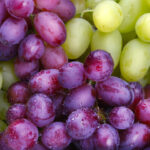Chile predicts higher kiwifruit yields next season
Chilean kiwifruit harvests in the coming season look set to exceed last year's due to less frost and good flowering blooms on vines, experts have claimed.
Chilean Kiwi committee assessor for the VI (O'Higgins) region Felipe Díaz, says proper thinning is essential to avoid small sizes and uneven fruit.
"Making a good load adjustment, hopefully before flowering, is essential to obtain the desired size and uniform quality," he says
The committee notes there has been slight frost damage in some areas such as the Andean foothills in O'Higgins. However, the Central Valley, and the VII (Maule) and VIII (Biobio) regions have benefited from more benign conditions than last year.
The high fertility of buds thanks to a good accumulation of chilling hours has led to more sprouting. Díaz says there was a surplus of 10-15% buds compared with last season in Peumo, O'Higgins.
In some areas, growers were unable to complete bud thinning before flowering. Many technicians and growers have been increasing cyanide applications to reduce sprouting and address the problems of rising labor costs.
Rancagua (O'Higgins), vines showed full blooming between Nov. 9 and 12, which was four to five days earlier than last season. However, the V (Valparaiso) region experienced cooler spring weather resulting in a delay of several days before flowering.
Flowering in Chile's kiwifruit growing heartlands of Chimbarongo and San Fernando (O'Higgins region), and Sagrada Familia (Maule region) occurred around the same time as last year. Díaz describes fruit on these vines as abundant and dense.
In the areas around Curicó, Talca, Linares and the foothills of Maule region blooms were a few days ahead with a shorter pollination period due to the weather and rain.
Díaz says average temperatures in Rancagua were in the lower optimal limit for bee flights, which resulted in irregular activity. The effectiveness of pollination is not usually known until four weeks after flowering.
He adds that delayed ripening in the more northern colder regions tends to result in a more concentrated harvest requiring greater logistical organization to avoid processing delays and difficulties.
In the first week of November a storm in the Maule region resulted in 1-2% losses in buds and some fruit plant material losses. Díaz says this proves the importance of protecting shoots before flowering and trimming as recommended in orchard focus technical meetings.
Another major concern was the appearance of yellow and orange spotting on vines sparking fears of the dreaded Psa-V outbreak. However, Díaz says this proved to be a false alarm with the marks disappearing with a temperature change.
Photo: Sag.cl













































